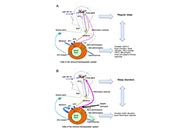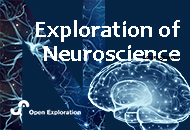Mesenchymal stem cell stroke therapy: current limitations in its clinical translation
For more than a decade now, research studies, proof of concept work, and clinical trials have endeavored to understand how mesenchymal stem cells might be used to help protect, repair, and/or regene
[...] Read more.
For more than a decade now, research studies, proof of concept work, and clinical trials have endeavored to understand how mesenchymal stem cells might be used to help protect, repair, and/or regenerate damaged brain tissue following stroke. To date, the majority of studies have not demonstrated significant improvements in either morbidity or medium-long-term outcome, although safety has been relatively well proven. Limitations are likely to be linked to the pathobiological complexity and seriousness of stroke tissue damage, low efficacy of treatment, and short half-life of bio-active proteins released by stem cells. This article will highlight the heterogeneity and limitation of completed studies and the current status of ongoing work. At the same time, the potential of other combinational type treatments, such as drug-loading and targeting, and the use of hydrogels is discussed.
Ylenia Pastorello, Mark Slevin
View:1453
Download:41
Times Cited: 0
For more than a decade now, research studies, proof of concept work, and clinical trials have endeavored to understand how mesenchymal stem cells might be used to help protect, repair, and/or regenerate damaged brain tissue following stroke. To date, the majority of studies have not demonstrated significant improvements in either morbidity or medium-long-term outcome, although safety has been relatively well proven. Limitations are likely to be linked to the pathobiological complexity and seriousness of stroke tissue damage, low efficacy of treatment, and short half-life of bio-active proteins released by stem cells. This article will highlight the heterogeneity and limitation of completed studies and the current status of ongoing work. At the same time, the potential of other combinational type treatments, such as drug-loading and targeting, and the use of hydrogels is discussed.
 Circadian regulation of the immune-hematopoietic systemOpen AccessReviewEarth’s rotation generates the basic circadian rhythm of day and night to which all living organisms must adapt to survive. In mammals, this happens thanks to a central clock located in the suprac [...] Read more.Georges MaestroniPublished: June 30, 2023 Explor Neurosci. 2023;2:123–139
Circadian regulation of the immune-hematopoietic systemOpen AccessReviewEarth’s rotation generates the basic circadian rhythm of day and night to which all living organisms must adapt to survive. In mammals, this happens thanks to a central clock located in the suprac [...] Read more.Georges MaestroniPublished: June 30, 2023 Explor Neurosci. 2023;2:123–139 Therapeutic potential of extracellular vesicles in Parkinson’s diseaseOpen AccessReviewGlobally, the incidence of Parkinson’s disease (PD) is increasing faster than other neurodegenerative disorders. Neuropathologically, PD is characterized by the loss of dopaminergic neurons in the [...] Read more.Michelli Ramires Teixeira ... Rodrigo Pinheiro AraldiPublished: June 29, 2023 Explor Neurosci. 2023;2:106–122
Therapeutic potential of extracellular vesicles in Parkinson’s diseaseOpen AccessReviewGlobally, the incidence of Parkinson’s disease (PD) is increasing faster than other neurodegenerative disorders. Neuropathologically, PD is characterized by the loss of dopaminergic neurons in the [...] Read more.Michelli Ramires Teixeira ... Rodrigo Pinheiro AraldiPublished: June 29, 2023 Explor Neurosci. 2023;2:106–122 Mesenchymal stem cell stroke therapy: current limitations in its clinical translationOpen AccessPerspectiveFor more than a decade now, research studies, proof of concept work, and clinical trials have endeavored to understand how mesenchymal stem cells might be used to help protect, repair, and/or regene [...] Read more.Ylenia Pastorello, Mark SlevinPublished: June 28, 2023 Explor Neurosci. 2023;2:98–105
Mesenchymal stem cell stroke therapy: current limitations in its clinical translationOpen AccessPerspectiveFor more than a decade now, research studies, proof of concept work, and clinical trials have endeavored to understand how mesenchymal stem cells might be used to help protect, repair, and/or regene [...] Read more.Ylenia Pastorello, Mark SlevinPublished: June 28, 2023 Explor Neurosci. 2023;2:98–105